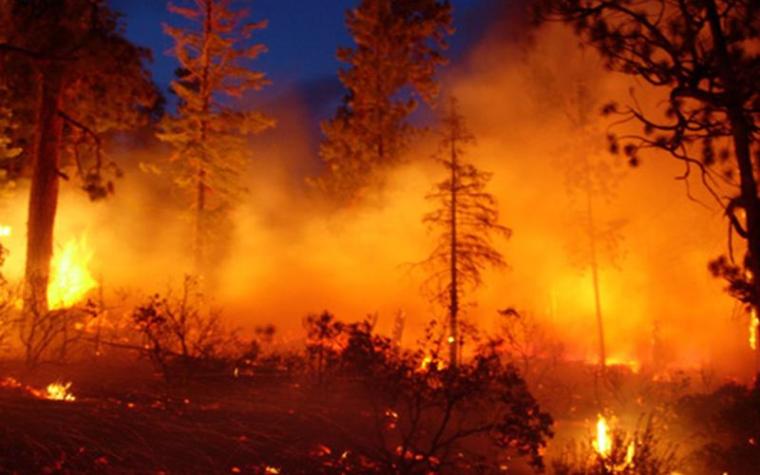COLUMBIA, Mo. – May is a good time for Missouri landowners to take proactive steps in protecting homes, barns and other structures from the threat of wildfire, says Joni Harper, field specialist in natural resources for University of Missouri Extension.
“While Missouri doesn’t typically see the massive wildfires that impact western states, we are certainly not immune,” says Harper. Grass fires, timber fires and even prescribed burns that escape can cause serious damage, especially in rural areas.
One of the best ways to reduce risk is by creating “defensible” space around your property – areas where vegetation and other fuels are reduced or removed to slow the spread of fire and improve firefighters’ ability to protect your structures.
Defensible space is the buffer between a building and the wildland area that surrounds it. Managing this space can help stop a fire from reaching your home, pasture, hayfield or woodlot.
There are three key zones to consider:
Immediate zone (0–5 feet from structures). This is your first and most critical line of defense.
- Keep this area clean, green and free of flammable debris.
- Use gravel, bare soil or noncombustible mulch.
- Regularly clean out gutters, roofs and under decks.
- Trim back overhanging branches and remove dead leaves or hay near buildings.
- Install spark arresters on chimneys.
Harper says this zone is also a great place for features like gravel paths, rain gardens or raised beds – just be sure they’re well-spaced and maintained.
Intermediate zone (5–30 feet out). This is typically your yard or the area around sheds and driveways.
- Keep grass mowed to 4 inches. A mowing height of 3-4 inches can help control weeds.
- Prune the lower branches of trees to prevent “ladder fuels.”
- Avoid storing firewood, hay bales or fuel tanks in this zone.
- Use fire-resistant landscaping where possible.
- Space out shrubs and small trees to prevent fire from jumping between them.
Think of this zone as your firebreak, a space that interrupts the fire’s path.
Extended zone (30–100-plus feet from structures). “Here’s where you work to really slow a fire down before it gets close,” says Harper. If you have timber stands, Conservation Reserve Program (CRP) acreage or unmanaged fencerows nearby, this zone is especially important.
- Thin dense woods and brush piles.
- Remove dead or dying trees and limbs.
- Maintain clear breaks between wooded areas and buildings.
- Keep roads, trails and field edges mowed and accessible for emergency vehicles.
Even in wet years, wind-driven fires and out-of-control brush burns can spread quickly. Many Missouri homes are surrounded by tall grass, cedar trees, dry leaves and aging outbuildings, all of which can ignite easily. “By managing the land around your buildings, you’re helping to protect not just your home but your family, livestock, equipment and neighbors as well,” says Harper.
Make sure roads and woodland trails on your property are easily accessible for firefighters and emergency vehicles. Access roads and gates should be at least 16 feet wide, giving trucks enough space to turn around.
For more information on wildfire safety and preparedness, check out Firewise USA from the National Fire Protection Association.
For guidance on forestry and land management best practices, contact your local MU Extension center or Missouri Department of Conservation forester.
